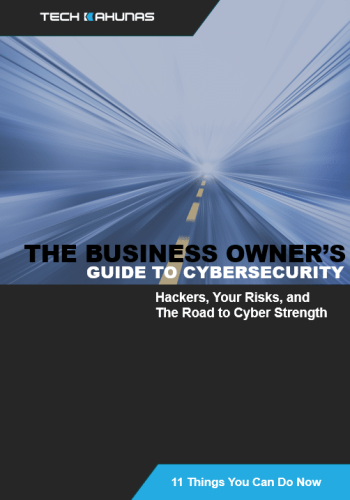To shield your biotech intellectual property from cyber threats, adopt strategic cybersecurity measures that align with high-growth objectives. Implement role-based access controls and multi-factor authentication to safeguard sensitive data. Employ advanced encryption techniques and regular security audits to guarantee data integrity. Foster a culture of cyber hygiene through thorough training, enhancing employee vigilance against threats. Utilize advanced threat detection systems and secure remote work infrastructure to anticipate and mitigate risks. Develop robust incident response protocols and engage cybersecurity experts for tailored guidance. For a deeper insight into reinforcing your cybersecurity posture, further details await exploration.
Key Takeaways
- Implement role-based access controls and multi-factor authentication to secure sensitive intellectual property.
- Conduct regular vulnerability assessments and security audits to identify and address potential weaknesses.
- Utilize advanced encryption methods, including quantum encryption, to protect data from interception and unauthorized access.
- Engage in threat intelligence sharing with industry peers to stay informed about evolving cyber threats.
- Develop and practice incident response protocols to swiftly manage and mitigate the impact of potential breaches.
Understand the Cyber Threat Landscape
In the rapidly evolving domain of biotechnology, understanding the cyber threat landscape is essential for safeguarding intellectual property. This sector is increasingly targeted by sophisticated cyber threat actors who exploit emerging threats and data breach trends to gain unauthorized access to sensitive information.
Ransomware tactics have become significantly pervasive, with attackers seeking to encrypt critical data and demand substantial ransoms. Consequently, it is imperative for biotech firms to stay abreast of cybersecurity regulations, which are constantly adapting to address these evolving challenges.
Industry specific risks necessitate a strategic focus on threat intelligence sharing. By collaborating with peers and industry bodies, biotech firms can gain valuable insights into potential attack vectors and develop informed strategies to mitigate them.
Implementing robust security frameworks not only provides a structured approach to risk management but also aligns with regulatory compliance requirements.
Furthermore, cyber insurance options should be considered as part of a thorough risk management strategy. These policies can offer financial protection against the repercussions of cyber incidents.
To effectively counteract these threats, strategic planning must integrate a holistic understanding of the cyber threat landscape, ensuring that protective measures are both proactive and adaptable to evolving risks.
Implement Robust Access Controls
Effective access controls are fundamental for protecting sensitive intellectual property in the biotech industry. Establishing role-based access guarantees that employees have the appropriate permissions tailored to their responsibilities. This minimizes the risk of unauthorized exposure to significant data.
Implementing multi-factor authentication adds an essential layer of security by requiring users to verify their identities through multiple channels, thereby safeguarding access to sensitive systems.
Regular access audits are important in monitoring user activity, identifying anomalies, and verifying compliance with access policies. These audits should assess credential management practices to prevent unauthorized use of privileged accounts.
In tandem, permission management must be agile, adapting to the dynamic needs of user onboarding and role changes within the organization.
Strategic session timeouts can mitigate risks associated with abandoned sessions, automatically disconnecting users after periods of inactivity. This practice is particularly important for systems handling high-value intellectual property.
Additionally, establishing stringent access policies and procedures for managing privileged accounts guarantees that significant systems are only accessible to authorized personnel.
Encrypt Sensitive Data
In the domain of biotech intellectual property, implementing advanced encryption protocols is paramount to safeguarding sensitive data against unauthorized access and cyber threats.
Strategically integrating these protocols with robust data access control mechanisms not only fortifies data security but also guarantees compliance with industry standards and regulations.
Advanced Encryption Protocols
Amidst the rapidly evolving landscape of biotechnology, safeguarding intellectual property through advanced encryption protocols is vital. As firms innovate at a breakneck pace, the need to protect sensitive data intensifies, necessitating cutting-edge solutions like quantum encryption and blockchain security.
Quantum encryption, leveraging the principles of quantum mechanics, offers unparalleled data protection by guaranteeing that any interception attempt disrupts the encoded information, rendering it unreadable. This technology is essential for high-growth biotech firms where the stakes of data breaches are exceedingly high.
Simultaneously, blockchain security provides a robust framework for safeguarding intellectual property. By utilizing a decentralized ledger, blockchain guarantees data integrity and transparency, making unauthorized alterations virtually impossible. This is especially relevant in biotechnology, where proprietary information is a key competitive advantage.
Integrating blockchain security into existing protocols not only fortifies data protection but also enhances the traceability and accountability of data transactions.
Strategic implementation of these advanced encryption protocols is critical for mitigating risks associated with cyber threats. Biotech firms must prioritize the adoption of these technologies within their cybersecurity strategies, guaranteeing that intellectual property is protected against the backdrop of an increasingly complex digital environment.
Data Access Control
Building on the foundation of advanced encryption protocols, implementing robust data access control mechanisms is essential in encrypting sensitive biotechnology data. High-growth biotech firms must strategically plan and deploy thorough data access controls to mitigate risks associated with cyber threats.
By leveraging data classification strategies, organizations can identify and prioritize the protection of their most valuable data assets. This process involves categorizing data based on sensitivity and criticality, enabling firms to apply tailored security measures.
To guarantee ideal data protection, consider the following strategic components:
- Data Classification Strategies: Establish a framework to systematically categorize and label data. This guarantees that sensitive data is readily identifiable, allowing for the application of appropriate access controls and encryption standards.
- User Authentication Methods: Implement multi-factor authentication (MFA) to enhance security. By requiring multiple forms of verification, firms can greatly reduce unauthorized access risks.
- Role-Based Access Controls (RBAC): Design access permissions based on user roles within the organization. This reduces exposure by limiting data access to those whose job responsibilities necessitate it.
- Regular Audits and Monitoring: Conduct systematic reviews and real-time monitoring of access logs. This proactive approach helps to detect and address anomalies or breaches swiftly, minimizing potential damage.
Strategically integrating these measures strengthens overall cybersecurity and safeguards crucial intellectual property.
Conduct Regular Security Audits
Conducting regular security audits is essential for identifying vulnerabilities early in the protection of biotech intellectual property.
By implementing continuous monitoring, organizations can swiftly detect and mitigate potential security threats before they escalate into significant risks.
This proactive approach guarantees that security measures remain robust and aligned with the evolving threat landscape, safeguarding valuable biotech innovations.
Identify Vulnerabilities Early
How can organizations in the biotech industry effectively safeguard their intellectual property? A pivotal approach is to identify vulnerabilities early through conducting regular vulnerability assessments.
These assessments are vital components of a robust risk management strategy, aiming to uncover potential weaknesses in the IT infrastructure before they are exploited. Conducting a detailed vulnerability assessment allows firms to systematically evaluate their systems, networks, and applications for security gaps, guaranteeing that proactive measures can be taken to mitigate identified risks.
Consider these strategic steps to enhance your vulnerability identification process:
- Comprehensive Mapping: Document all digital assets and data flows to understand the full scope of potential exposure points. This mapping is the foundation for any effective vulnerability assessment.
- Prioritization of Threats: Not all vulnerabilities pose the same level of risk. Assess and prioritize vulnerabilities based on the potential impact and likelihood of exploitation, focusing on those that threaten critical intellectual property.
- Engage Third-Party Experts: External cybersecurity specialists bring an unbiased perspective and advanced tools that can identify vulnerabilities that internal teams might overlook.
- Regular Updates: The threat landscape is constantly evolving. Regularly update your vulnerability assessments to confirm they reflect the latest threats and vulnerabilities, aligning with ongoing risk management efforts.
Implementing these strategies enables biotech firms to protect their intellectual property effectively.
Implement Continuous Monitoring
Following the identification of vulnerabilities, organizations in the biotech industry must adopt a proactive stance by implementing continuous monitoring through regular security audits. This strategic approach leverages real-time analytics to provide a dynamic overview of the security landscape, enabling timely identification and response to potential threats. Through anomaly detection, firms can discern unusual patterns that may indicate cyber threats, thereby preserving the integrity of their intellectual property.
A critical component of continuous monitoring involves the systematic review of security protocols. To achieve this, firms should integrate the following elements:
| Component | Description | Benefit |
|---|---|---|
| Real-Time Analytics | Continuous data assessment for instant insights | Reduces response time to threats |
| Anomaly Detection | Identifies deviations from normal behavior | Early threat identification |
| Security Audits | Regular evaluations of security measures | Guarantees compliance and updates |
The table above underlines the pillars of an effective continuous monitoring strategy. By adopting these measures, biotech firms can maintain a fortified perimeter against evolving cyber threats. Additionally, continuous monitoring supports strategic planning by providing actionable intelligence and guaranteeing that the security infrastructure adapts to emerging risks. This not only safeguards sensitive information but also enhances resilience, allowing high-growth biotech entities to focus on innovation and expansion without compromising security.
Train Employees on Cyber Hygiene
In the domain of biotech innovation, safeguarding intellectual property requires a strategic emphasis on training employees in cyber hygiene to mitigate risks effectively.
Cyber hygiene training must be an integral component of any high-growth firm's security strategy. Employee awareness is essential, as human error often serves as the primary vector for cyber threats. A well-informed workforce can act as the first line of defense against cyberattacks.
To enhance cybersecurity, consider the following measures:
- Regular Cyber Hygiene Workshops: Conduct periodic training sessions to guarantee employees are well-versed in best practices, such as password management, recognizing phishing attempts, and using secure networks.
- Simulated Phishing Exercises: Implement these exercises to evaluate and improve employee responses to phishing attacks, thereby enhancing their vigilance and response times.
- Access Control Protocols: Educate employees on the importance of adhering to access control measures, ensuring that sensitive data is only accessible to authorized personnel.
- Incident Reporting Mechanisms: Foster a culture of transparency and prompt reporting by training employees on how to recognize and report suspicious activities immediately.
Utilize Advanced Threat Detection
Advanced threat detection systems are essential in the strategic defense against sophisticated cyber threats targeting biotech intellectual property. These systems leverage anomaly detection to identify deviations from established network behavior, offering vital early warnings of potential breaches. By integrating threat intelligence, organizations can enrich detection capabilities with real-time data on emerging threats, thereby staying ahead of adversaries.
For high-growth biotech firms, the implementation of advanced threat detection requires a thorough approach. It begins with deploying machine learning algorithms that can sift through vast data sets to discern normal operational patterns. This anomaly detection becomes the foundation for distinguishing benign activity from potentially malicious actions.
Strategic planning should guarantee that these systems are continuously updated with the latest threat intelligence, which provides insights into threat actors' tactics, techniques, and procedures.
Moreover, deploying a robust threat detection framework aligns with risk-focused cybersecurity protocols, enabling more accurate identification and faster response to threats. This all-encompassing approach not only secures sensitive IP but also fortifies the organization's overall cyber posture.
Secure Remote Work Infrastructure
The increasing prevalence of remote work in the biotech sector necessitates the establishment of a secure remote work infrastructure to protect intellectual property. This shift demands robust strategic planning and risk management to prevent unauthorized access and data breaches.
Remote work policies must be clearly defined, focusing on secure communication channels and data protection. Implementing a secure remote work infrastructure is vital for safeguarding sensitive information.
Key components of a secure remote work infrastructure include:
- VPN Implementation: Virtual Private Networks (VPNs) encrypt data transmissions, guaranteeing secure communication between remote employees and corporate networks. This minimizes the risk of data interception by malicious entities.
- Multi-Factor Authentication (MFA): Enforcing MFA adds an additional layer of security, requiring multiple forms of verification before granting access to sensitive systems, thereby reducing the likelihood of unauthorized access.
- Endpoint Security Solutions: Deploy extensive endpoint security solutions that include antivirus, anti-malware, and firewall protection to mitigate threats targeting remote devices.
- Regular Security Audits and Training: Conduct regular audits to identify vulnerabilities and guarantee compliance with remote work policies. Additionally, provide ongoing cybersecurity training to employees to reinforce awareness and adherence to security protocols.
Strategically implementing these measures will enhance the security of remote work environments, protecting valuable biotech intellectual property.
Establish Incident Response Protocols
To effectively manage and mitigate potential security breaches in the biotech sector, establishing detailed incident response protocols is essential. These protocols form the backbone of an organization's crisis management strategy, ensuring that any cybersecurity incident is addressed swiftly and with precision.
The development of a thorough incident response plan involves identifying potential vulnerabilities, defining roles and responsibilities, and establishing clear communication channels. It is critical that these protocols are tailored to the specific needs of the biotech industry, taking into account the unique data types and regulatory requirements inherent to this field.
Incident response begins with preparation, which includes regular training and simulation exercises for staff, ensuring that all team members are equipped to respond effectively to a breach.
Detection and analysis are the next steps, where rapid identification of the breach's nature and scope are paramount. This facilitates containment and eradication efforts, minimizing potential damage.
Post-incident, a detailed review is required to identify lessons learned and strengthen future defenses.
Incorporating a robust incident response framework into strategic planning not only safeguards intellectual property but also fortifies the overall resilience of high-growth biotech firms against cybersecurity threats.
Collaborate With Cybersecurity Experts
Engaging with cybersecurity experts is a critical component of safeguarding intellectual property in the biotech industry. These partnerships are essential for implementing robust security frameworks tailored to the unique needs of high-growth biotech firms.
By forming strategic cybersecurity partnerships, organizations can leverage expert consultations to enhance their threat intelligence capabilities and conduct thorough risk assessments. This guarantees the identification and mitigation of potential vulnerabilities before they can be exploited.
Key actions to take into account include:
- Threat Intelligence & Risk Assessments: Engage experts to provide insights into emerging threats and conduct extensive risk assessments to identify potential vulnerabilities in your systems.
- Compliance Strategies & Security Frameworks: Collaborate on developing compliance strategies that align with industry standards and regulatory requirements, guaranteeing your security framework is both effective and compliant.
- Incident Simulations & Vulnerability Management: Conduct regular incident simulations to assess the readiness of your response protocols and refine your vulnerability management processes.
- Technology Integration & Research Collaborations: Work with cybersecurity experts to integrate new security technologies seamlessly and foster research collaborations that advance cybersecurity innovations tailored to the biotech sector.
Such collaborations not only reinforce the security posture of biotech firms but also contribute to a resilient and adaptive security environment that safeguards intellectual assets.
Frequently Asked Questions
How Can We Protect Our Biotech IP From Insider Threats?
To safeguard biotech intellectual property from insider threats, implement robust insider threat detection systems and conduct regular employee training. This strategic planning enhances technical expertise, reduces risk, and guarantees proactive management of potential vulnerabilities within the organization.
What Are the Costs Associated With Implementing Comprehensive Cybersecurity Measures?
Conducting a cost analysis is essential for strategic planning in cybersecurity. Budget allocation should consider hardware, software, personnel training, and ongoing maintenance. Effective risk management requires investment balancing, aligning costs with potential threats and organizational growth objectives.
How Do We Balance Cybersecurity With System Usability and Efficiency?
To balance cybersecurity with system usability and efficiency, conduct thorough risk assessments, implement security protocols, and prioritize strategic planning. User training enhances user experience, ensuring that security measures do not impede operational effectiveness or workflow continuity.
What Are the Legal Implications of a Biotech IP Data Breach?
A biotech IP data breach can lead to significant legal implications, including violations of data privacy laws and regulatory compliance requirements. Strategic planning must address risk-focused measures to mitigate potential lawsuits, fines, and reputational damage.
How Can Small Biotech Firms Afford Advanced Cybersecurity Technologies?
Small biotech firms can strategically leverage cloud solutions and open source tools to enhance cybersecurity. Grant funding and cooperative partnerships further enable access to advanced technologies, mitigating risks while maintaining cost-efficiency in safeguarding intellectual property.



 Get your CPA firm aquainted with new FTC rules.
Get your CPA firm aquainted with new FTC rules. 




